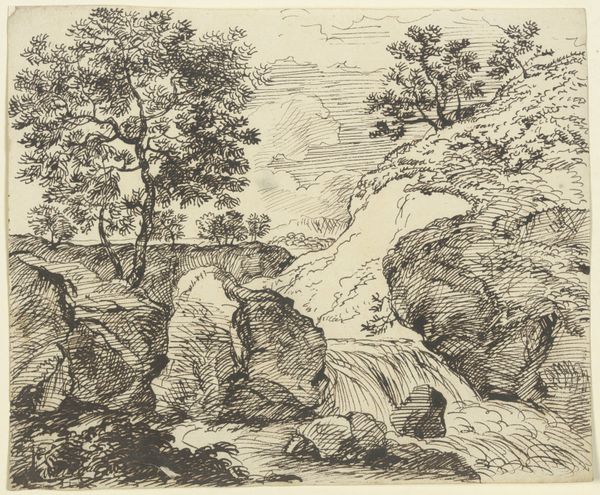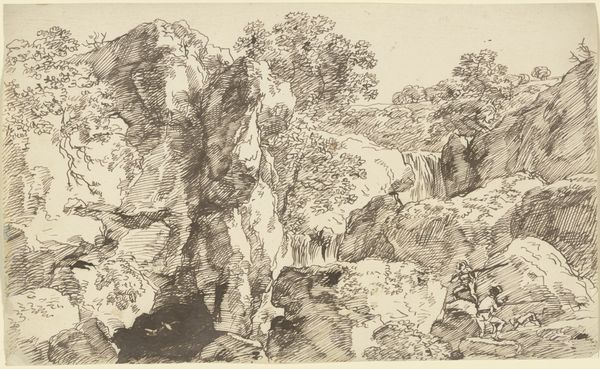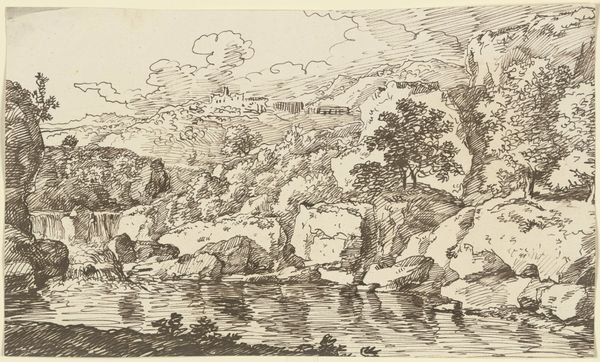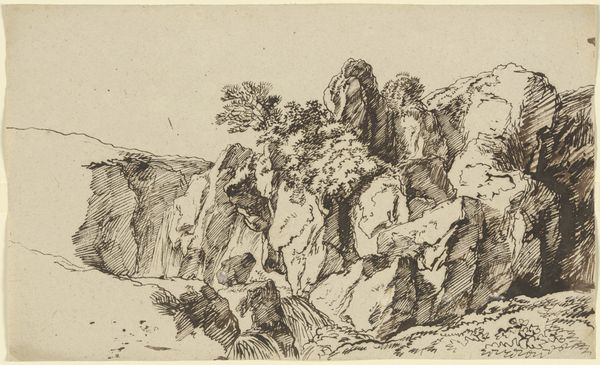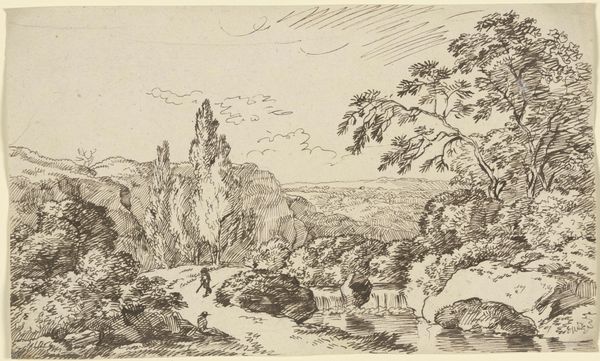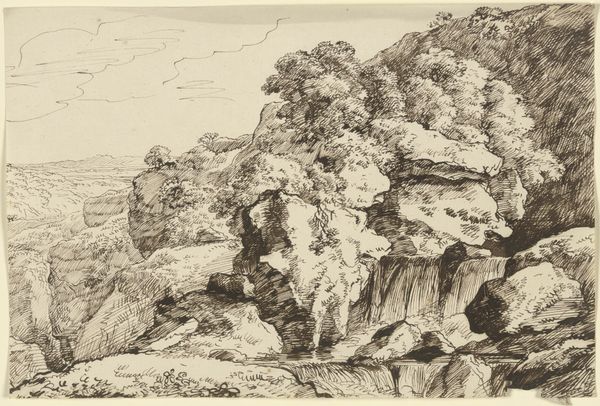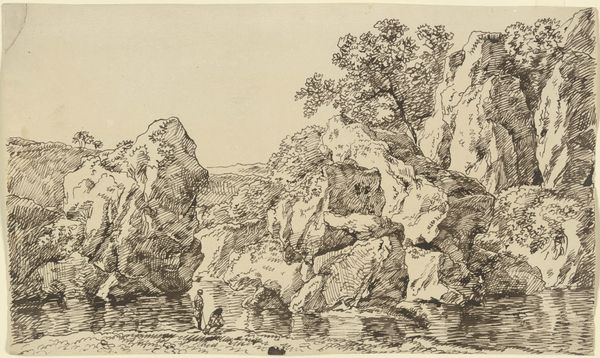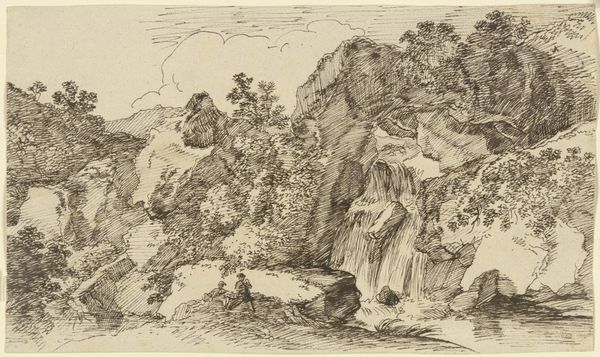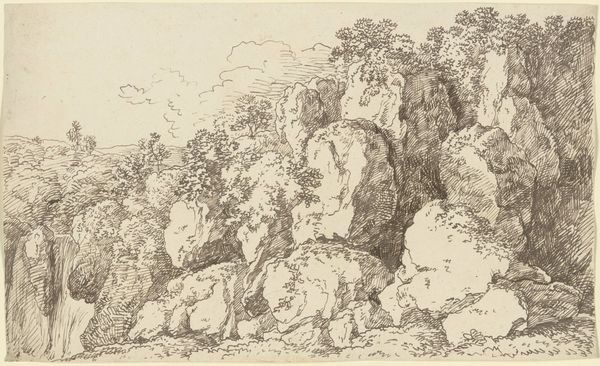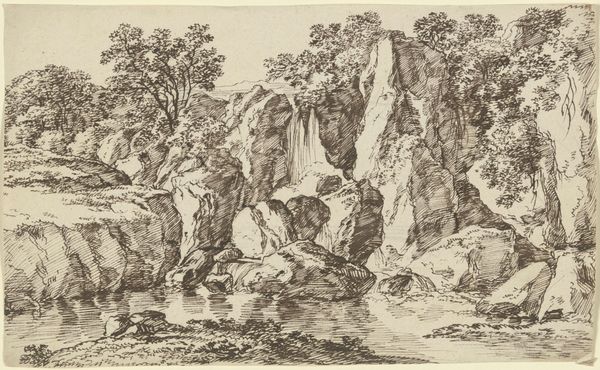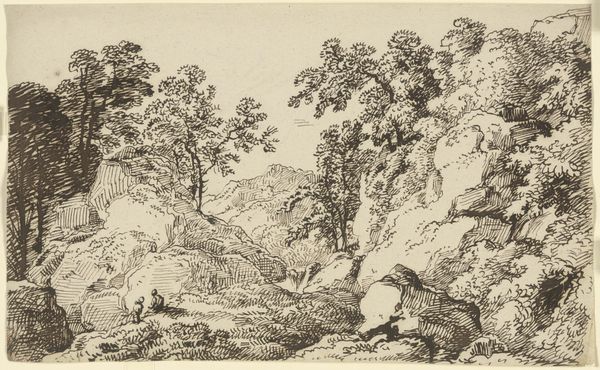
drawing, ink, pen
#
drawing
#
ink drawing
#
pen drawing
#
pen sketch
#
landscape
#
figuration
#
ink
#
romanticism
#
line
#
pen
Copyright: Public Domain
Curator: Let’s have a look at this captivating drawing: "Felsschlucht mit zusammenlaufenden Wasserfällen" by Franz Kobell, held here at the Städel Museum. It's executed in pen and ink, showcasing Kobell’s adept skill in landscape drawing. Editor: Whoa, it’s incredibly busy! In a good way. My eye darts all over, trying to piece together this wild, watery landscape. It feels almost…overwhelmingly Romantic, you know? The light and dark contrasting wildly and leading you through every layer, almost cinematically. Curator: Indeed! Kobell really exploits the pen's potential, doesn’t he? See how he builds up texture with those close, rhythmic lines. It creates a real sense of depth, but also reveals the hand, the labor that goes into creating the illusion of this immense scene. And that reveals so much about Romantic-era art production. Editor: The line work is beautiful! Almost frenetic in its energy. It feels less about strict representation and more about conveying an experience—the cool dampness of the rocks, the roar of the falls… Did everyone feel so overwhelmed by nature back then? It’s like they’re channeling nature's sublime chaos onto the page, isn't it? Curator: It's certainly capturing the burgeoning romantic ideals! Think of the availability of pen and ink versus painting. These kinds of drawings allowed artists to connect intimately with nature, to rapidly iterate and create these emotive scenes en plein air, thus fostering the movement's interest in art being raw and individualistic. Editor: You've got a point there. And there are two small figures at the bottom, observing everything. That’s pretty humbling – just us and nature. Makes you feel small. The composition, with its layered details, pulls you right into that realization! Curator: It makes us really think about accessibility to art at that time. What materials were available and for what cost to capture a certain feeling that artists like Kobell experienced. The pen and paper really were the peoples artistic rendering, you could say. Editor: Exactly. A great reminder that access to artistic tools profoundly shapes not just who makes art, but how we interpret it and what we're hoping to communicate through those means!
Comments
No comments
Be the first to comment and join the conversation on the ultimate creative platform.


